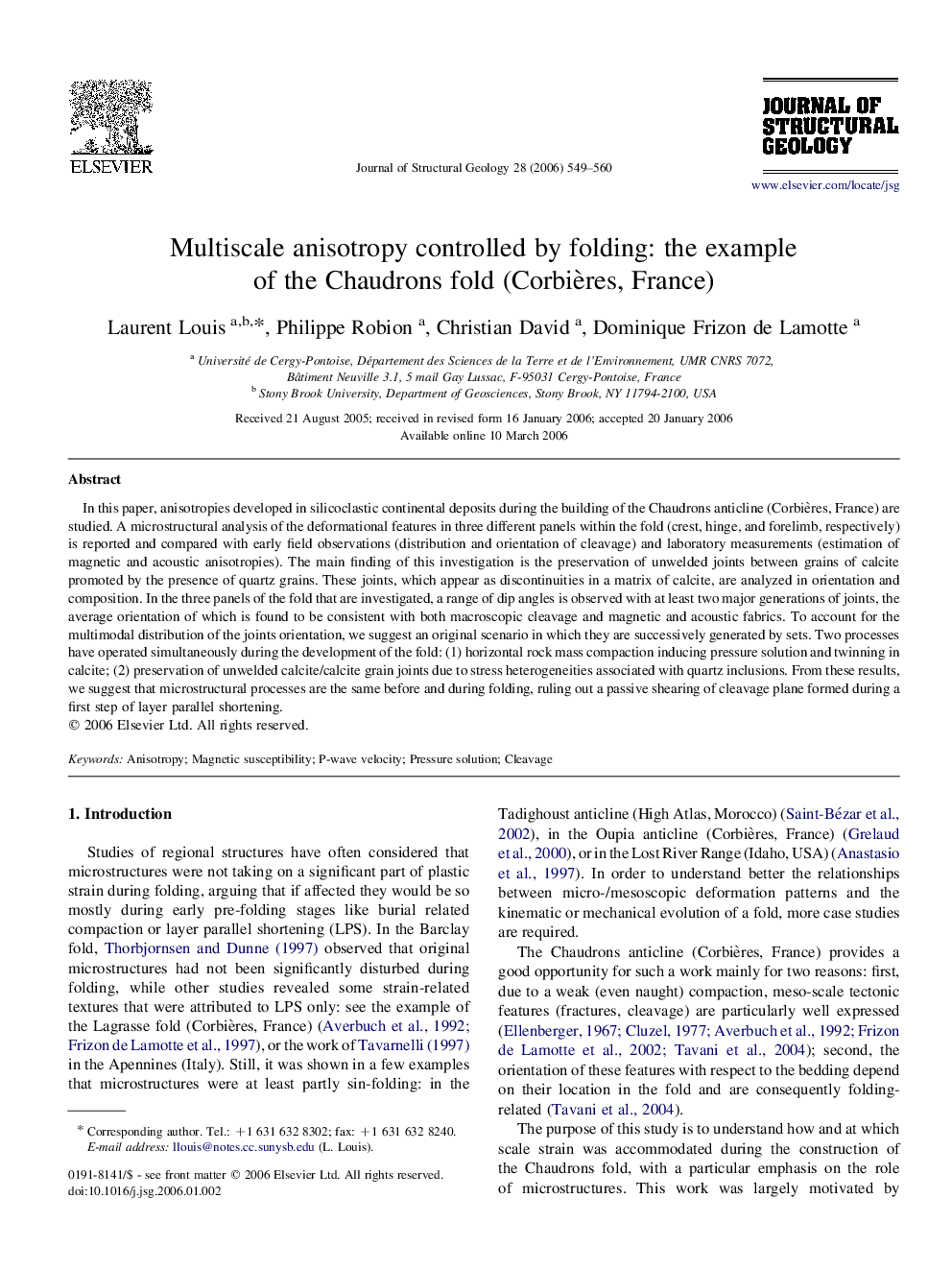| Article ID | Journal | Published Year | Pages | File Type |
|---|---|---|---|---|
| 4734267 | Journal of Structural Geology | 2006 | 12 Pages |
In this paper, anisotropies developed in silicoclastic continental deposits during the building of the Chaudrons anticline (Corbières, France) are studied. A microstructural analysis of the deformational features in three different panels within the fold (crest, hinge, and forelimb, respectively) is reported and compared with early field observations (distribution and orientation of cleavage) and laboratory measurements (estimation of magnetic and acoustic anisotropies). The main finding of this investigation is the preservation of unwelded joints between grains of calcite promoted by the presence of quartz grains. These joints, which appear as discontinuities in a matrix of calcite, are analyzed in orientation and composition. In the three panels of the fold that are investigated, a range of dip angles is observed with at least two major generations of joints, the average orientation of which is found to be consistent with both macroscopic cleavage and magnetic and acoustic fabrics. To account for the multimodal distribution of the joints orientation, we suggest an original scenario in which they are successively generated by sets. Two processes have operated simultaneously during the development of the fold: (1) horizontal rock mass compaction inducing pressure solution and twinning in calcite; (2) preservation of unwelded calcite/calcite grain joints due to stress heterogeneities associated with quartz inclusions. From these results, we suggest that microstructural processes are the same before and during folding, ruling out a passive shearing of cleavage plane formed during a first step of layer parallel shortening.
